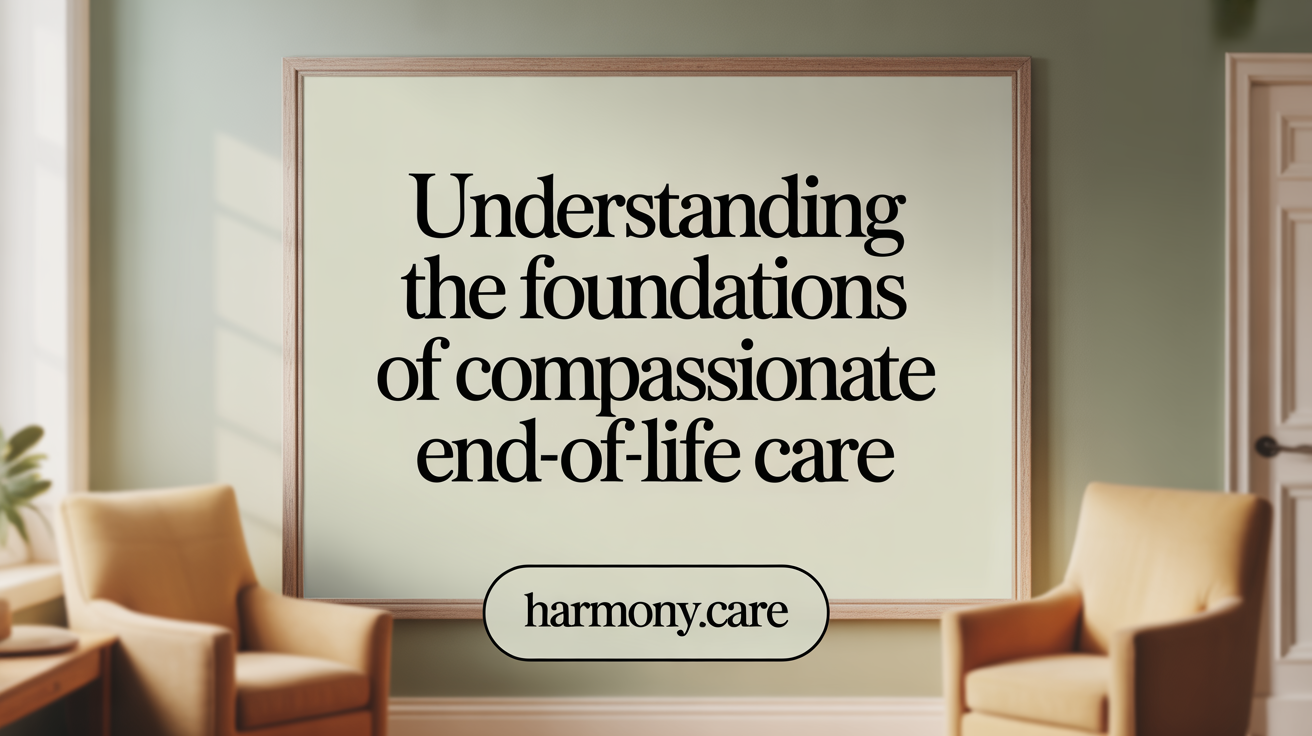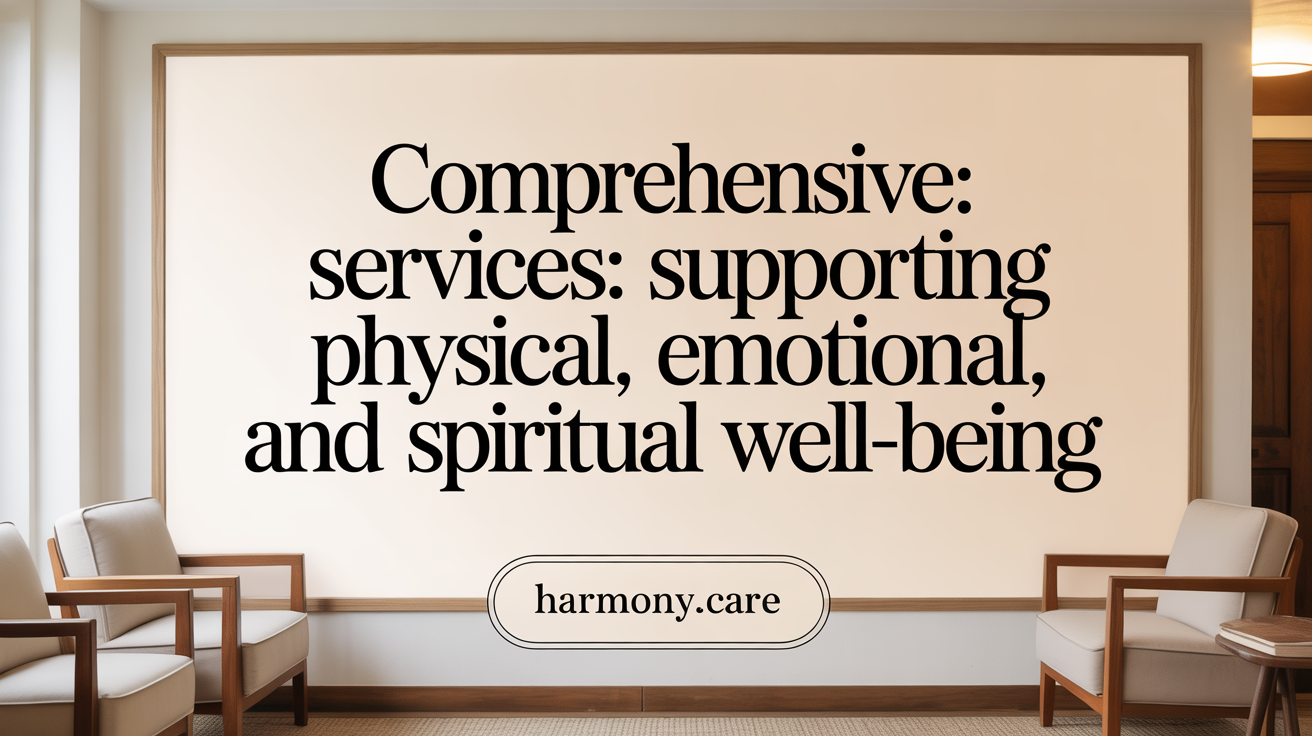Introducing the Essentials of Palliative and Hospice Care
Understanding the differences and unique features of palliative care and hospice care empowers patients, families, and caregivers to make well-informed decisions about managing serious illnesses and end-of-life care. This article explores the definitions, eligibility, services, settings, and other crucial factors that distinguish these compassionate care approaches designed to improve quality of life at different stages of illness.
Core Concepts: What Are Palliative and Hospice Care?

What are the core definitions and purposes of palliative care and hospice care?
Palliative care is a specialized branch of medicine focused on alleviating pain, discomfort, and stress associated with serious illnesses. It is designed to improve quality of life for patients regardless of their disease stage and can be provided alongside treatments aimed at curing or controlling the illness. This type of care is flexible and can be initiated early after diagnosis, in hospitals, clinics, or even at home. Its primary goal is symptom relief, emotional and spiritual support, and helping patients and families cope with the challenges of illness.
Hospice care, meanwhile, is a subset of palliative care intended specifically for individuals nearing the end of life. Usually for patients with a prognosis of six months or less, hospice shifts the focus from cure to comfort, emphasizing relief from symptoms and emotional well-being. It involves a multidisciplinary team that provides compassionate support tailored to the person's wishes, often in their home or in specialized hospice facilities. While all hospice care is palliative, not all palliative care qualifies as hospice, as palliative support can occur at any point during a serious illness.
Both types of care are centered on respecting patient dignity and maximizing comfort, but the key difference lies in their timing and treatment goals. Palliative care begins early and continues alongside other treatments, whereas hospice is reserved for the final months of life when curative efforts are no longer pursued.
Key Differences in Timing, Goals, and Eligibility
 When are palliative and hospice care appropriate?
When are palliative and hospice care appropriate?
Palliative care can be beneficial at any stage of a serious illness, whether you are newly diagnosed or managing a chronic condition. It aims to relieve symptoms, reduce pain, and support emotional and spiritual well-being, regardless of how advanced the disease is. This type of care is suitable alongside curative treatments like chemotherapy, surgery, or radiation. Conversely, hospice care is reserved for patients nearing the end of life, typically with an estimated prognosis of six months or less. Patients usually choose hospice when curative options have been exhausted, and their focus shifts entirely to comfort and quality of life.
What are the differences in treatment goals and timing?
The main distinction lies in their objectives and the timing of care. Palliative care seeks to improve quality of life at any point in the disease trajectory, addressing symptoms and emotional needs. It can start right at diagnosis or later in the illness, and continues as long as needed. Hospice care, on the other hand, centers solely on comfort and symptom management during the final months or weeks of life. It involves discontinuing curative treatments and concentrating on easing suffering. Timing-wise, palliative care begins early and can be ongoing, while hospice is specifically for those at the terminal stage.
Who typically qualifies for palliative care and hospice care?
Any person with a serious, chronic, or life-threatening illness can be eligible for palliative care. This includes diseases such as cancer, heart failure, COPD, dementia, or liver disease, across all ages. The focus is on symptom control and support for both the patient and family, provided regardless of age or prognosis.
In contrast, hospice care is generally limited to patients who have a terminal illness with a prognosis of six months or less, as estimated by at least two healthcare providers. Patients qualifying for hospice typically show signs of decline, such as weight loss, increased hospitalizations, or reduced ability to care for themselves. They usually decide to stop curative treatments and prioritize comfort measures.
Does receiving palliative care mean a patient will soon enter hospice?
Not necessarily. Receiving palliative care does not mean that someone is close to death or will automatically transition into hospice. It is an ongoing supportive service that can be started early in the illness, providing relief from symptoms at any point. Many patients who begin palliative care can improve or stabilize and may even return to their previous health status. Hospice remains an option later on, if the disease advances and the patient’s prognosis confirms that they are approaching the end of life.
Overall, the main difference is that palliative care is accessible at any illness stage, aiming to enhance comfort and quality of life, while hospice is specifically for those at the final phase, emphasizing dignity and symptom relief when curative treatments are no longer pursued.
Scope and Benefits: Services Offered by Palliative and Hospice Care
 Palliative and hospice care are designed to offer comprehensive support to individuals facing serious or terminal illnesses, with the goal of improving quality of life. These services encompass a broad range of benefits tailored to meet physical, emotional, and spiritual needs.
Palliative and hospice care are designed to offer comprehensive support to individuals facing serious or terminal illnesses, with the goal of improving quality of life. These services encompass a broad range of benefits tailored to meet physical, emotional, and spiritual needs.
Patients receive expert symptom management, including relief from pain, nausea, breathlessness, and fatigue. This alleviation of discomfort is a cornerstone of both care types, making daily life more manageable.
Beyond physical relief, emotional and psychosocial support is a vital component. Patients and their families often navigate complex feelings of fear, grief, and uncertainty. Care teams provide counseling, facilitate decision-making, and support emotional resilience.
A key aspect of these services is the involvement of interdisciplinary teams. These teams include physicians, nurses, social workers, chaplains, therapists, and volunteers, all working collaboratively to address the diverse needs of each patient. Such coordination ensures holistic care tailored to individual preferences and circumstances.
Support extends to spiritual and cultural considerations, respecting personal beliefs and values. Family members often participate actively in the care process, receiving guidance and bereavement support to cope with impending loss.
Care can be provided in a variety of settings, including patients’ homes, hospitals, hospice centers, nursing homes, and outpatient clinics. This flexibility allows patients to receive comfort care in the most familiar and convenient environment.
Overall, both palliative and hospice services aim not only to reduce physical suffering but also to promote dignity, emotional well-being, and spiritual peace, creating a supportive environment during some of life's most challenging times.
Care Settings and Team Composition: Where and How Care Is Delivered
 Palliative and hospice care are delivered across various settings, tailored to the needs and prognosis of the patient. Palliative care can be provided in hospitals, outpatient clinics, nursing homes, or directly at home. It supports patients of all ages at any stage of a serious illness, whether early or advanced, and can be combined with curative or disease-modifying treatments. Because of its flexible nature, palliative care’s primary focus is on symptom relief and enhancing quality of life.
Palliative and hospice care are delivered across various settings, tailored to the needs and prognosis of the patient. Palliative care can be provided in hospitals, outpatient clinics, nursing homes, or directly at home. It supports patients of all ages at any stage of a serious illness, whether early or advanced, and can be combined with curative or disease-modifying treatments. Because of its flexible nature, palliative care’s primary focus is on symptom relief and enhancing quality of life.
Hospice care, a specialized subset of palliative care, is typically reserved for the final months of life when prognosis is six months or less. It is predominately provided in the patient’s home, but can also be offered in hospice centers, nursing homes, hospitals, or dedicated inpatient hospice units. The environment is geared toward comfort and end-of-life support, emphasizing symptom management and emotional well-being.
Both care types involve interdisciplinary teams that include doctors, nurses, social workers, chaplains, and therapists, working collaboratively to address the physical, emotional, spiritual, and psychosocial needs of patients and their families. While palliative care teams may work closely with primary care physicians and involve specialists, hospice teams often include additional volunteers and spiritual counselors to provide comprehensive support.
Family involvement is central to both approaches, with support services such as counseling, education, and bereavement care integrated into the care plans. The setting and team composition reflect the patient’s preferences, clinical requirements, and stage of illness, ensuring continuous and personalized care tailored to individual needs.
Understanding Cost and Insurance Coverage for Both Care Types
 When comparing the costs and insurance coverage for palliative and hospice care, there are notable differences. Hospice care is typically more predictable in cost and often fully covered by insurance programs such as Medicare, Medicaid, and many private insurers. Medicare, for instance, covers approximately $150 per day for home-based hospice services and around $500 daily for inpatient hospice care, with most patients paying little to no out-of-pocket expenses.
When comparing the costs and insurance coverage for palliative and hospice care, there are notable differences. Hospice care is typically more predictable in cost and often fully covered by insurance programs such as Medicare, Medicaid, and many private insurers. Medicare, for instance, covers approximately $150 per day for home-based hospice services and around $500 daily for inpatient hospice care, with most patients paying little to no out-of-pocket expenses.
In contrast, palliative care costs can vary widely. Since palliative services are provided in different settings — including hospitals, outpatient clinics, or home-based care — expenses depend on the services required, the duration of care, and the specific insurance plan. Most insurance providers, including Medicare and Medicaid, cover some aspects of palliative care, especially when related to serious illnesses.
Eligibility criteria influence coverage as well. For hospice, a prognosis of less than six months, certified by two physicians, is generally required. This eligibility condition often makes coverage straightforward once the criteria are met. Palliative care, however, can be provided at any illness stage without strict prognostic requirements, so coverage hinges on the individual health plan and documented medical needs.
For patients navigating these benefits, it's advisable to review the specifics of their insurance policies. While Medicare provides comprehensive coverage for hospice, the coverage for palliative care is more variable but generally includes significant components of symptom management and supportive services. Private insurances might offer additional benefits, but coverage limits and co-payments vary.
In summary, hospice care is usually more economically predictable and fully covered, especially under Medicare, due to its focus on end-of-life support. Palliative care costs depend on individual circumstances but are generally partially covered by Medicare, Medicaid, and private insurance. Patients should consult their insurance providers to understand their benefits fully and plan accordingly.
Making the Choice: Key Considerations for Patients and Families
What factors should individuals consider when deciding between palliative care and hospice care?
Deciding between palliative care and hospice care involves evaluating several important aspects of the patient’s health and personal wishes. One of the primary factors is the stage of illness and prognosis. Palliative care can be introduced at any point during a serious illness and is suitable for ongoing management alongside treatments aimed at curing or controlling disease. Conversely, hospice care is generally reserved for patients with an expected prognosis of six months or less, when curative treatments are no longer effective or pursued.
Patients and families should also consider their treatment preferences—whether they wish to continue aggressive therapies or focus solely on comfort and symptom relief. The decision depends heavily on individual values, emotional readiness, and the type of support they seek. It’s essential to engage in open communication with healthcare providers, who can help interpret medical assessments, such as prognosis and disease progression.
Care settings are another important aspect—palliative care can be provided in hospitals, outpatient clinics, or at home, offering flexible options. Hospice care often emphasizes home-based services, though it can also be delivered in hospice centers or nursing facilities. Coverage and costs are also practical considerations, with Medicare, Medicaid, and private insurance covering these services differently.
Ultimately, the choice should be guided by thorough discussions involving medical professionals, the patient’s wishes, family input, and an understanding of the available services. This collaborative approach ensures the selected care aligns with the patient's health status and personal goals, maintaining dignity and quality of life throughout the illness journey.
Clarifying the Relationship Between Palliative Care and Comfort Care
How do palliative care and comfort care compare?
Palliative care and comfort care are intimately connected, with both emphasizing relief from symptoms and an enhancement of quality of life for those suffering from serious or chronic illnesses. Palliative care is a comprehensive medical specialty that supports patients at any stage of their illness, whether they are receiving curative treatment or not. It addresses a wide spectrum of needs, including physical pain, emotional stress, and spiritual concerns.
Comfort care, often used interchangeably with palliative care, particularly in end-of-life contexts, primarily focuses on managing symptoms to ensure the patient’s comfort. It is typically associated with care provided during the final months of life, aiming to minimize suffering when curative options are exhausted or no longer pursued.
Hospice care represents a specialized form of comfort or palliative care for patients approaching the end of life, generally with a prognosis of six months or less. It is delivered through a multidisciplinary team that provides medical relief, emotional support, and spiritual guidance.
In essence, all hospice and comfort care are subsets of palliative support, with palliative care serving a broader purpose throughout the entire course of an illness. It can be initiated at diagnosis, with the aim to alleviate suffering at any point, whereas comfort care tends to be more specifically associated with end-stage management. Understanding these distinctions helps in planning appropriate, patient-centered healthcare, aligning treatment goals with individual wishes and medical circumstances.
Conclusion: Informed Decisions Enhance Care Experiences
Navigating the differences between palliative care and hospice care is essential for patients facing serious or terminal illnesses, their families, and caregivers. While both prioritize comfort, dignity, and emotional support, understanding their purposes, timing, eligibility, and coverage helps ensure that individuals receive appropriate care tailored to their unique needs and wishes. Early engagement with healthcare providers about these options can improve quality of life, facilitate symptom management, and provide valuable support throughout the illness journey and into end-of-life care. Ultimately, knowledge empowers patients and families to choose the care path that best aligns with their goals and enhances meaningful moments during challenging times.
References
- Palliative Care vs. Hospice: Which to Choose - CaringInfo.org
- Palliative vs. Hospice Care: What's the Difference? | VITAS Healthcare
- What Are Palliative Care and Hospice Care?
- The Difference Between Hospice and Palliative Care
- The Difference Between Hospice Care and Palliative Care
- Palliative care vs hospice: Is there a difference? - Northwell Health
- Palliative care vs. hospice: Similarities, differences, and costs
- Hospice vs Palliative care: A comprehensive review for primary care ...
